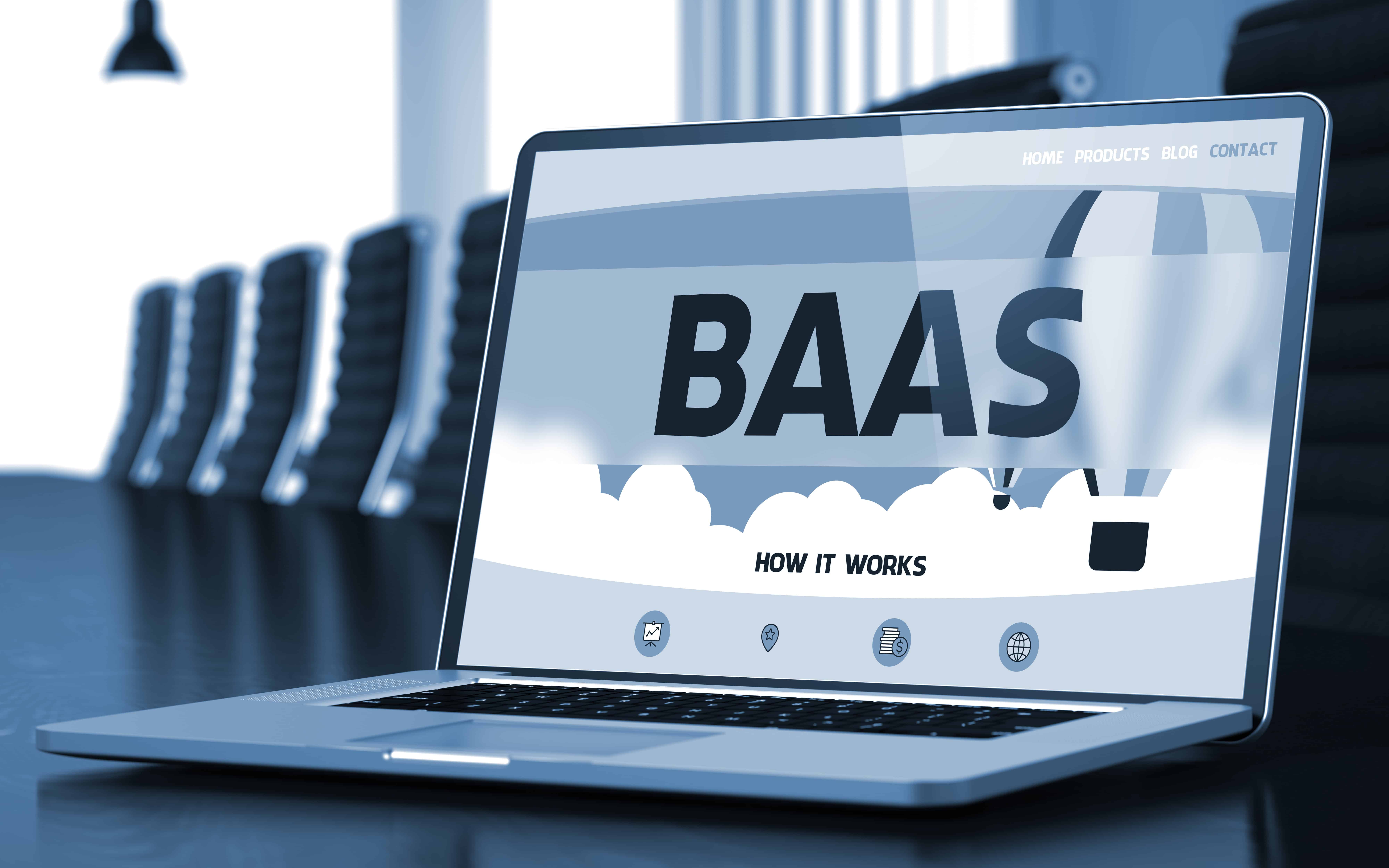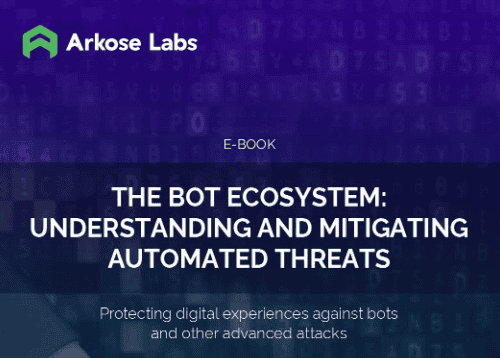Bot management solutions can also ensure user data security by detecting and blocking malicious activity. As conversational interfaces grow in popularity, bots are becoming a crucial part of how we interact with companies and apps.
Bots-as-a-service
Bots-as-a-service, also known as BaaS, is a burgeoning technology that is quickly gaining traction among enterprises of all scales. BaaS allows organizations to automate repetitive tasks and streamline their operations by utilizing pre-built bots that can perform a variety of functions.
With the rise of artificial intelligence and machine learning, bots-as-a-service has become more sophisticated and customizable, enabling businesses to create bots that can perform complex tasks and respond to user requests in real-time. As BaaS continues to evolve, it has the potential to revolutionize the way businesses operate and interact with their customers, making it an exciting thing to watch in coming years.
But there’s a caveat.
Bots-as-service meets cybercrime
With the increasing sophistication of bots, cybercriminals can use BaaS to create more advanced and convincing bot-driven attacks, such as phishing scams, malware distribution, and DDoS attacks. These bots can also be used to commit online fraud, such as account takeovers and fake account creation, resulting in significant financial losses for individuals and businesses.
As a result, cybersecurity experts are continuously monitoring BaaS activity to identify and prevent bot-driven cybercrime and abuse. Businesses are now on the hook to implement measures such as CAPTCHAs, multi-factor authentication, and web application firewalls to protect against bot-driven attacks.
Big picture, BaaS can be both a tool for businesses to improve their operations and a potentially devastating weapon in the rise of cybercrime-as-service (CaaS).
For more on the rise of cybercrime and bots, read our eBook:
Understanding the basics of BaaS
With BaaS, developers can leverage the power of AI and natural language processing to build sophisticated chatbots that can understand and respond to customer inquiries. These chatbots can be trained to provide personalized recommendations, answer frequently asked questions, and even perform simple transactions.
BaaS providers offer pre-built tools and frameworks for developers to easily build, test, and deploy chatbots across different messaging platforms like Facebook Messenger, WhatsApp, and Slack. They also give businesses analytics and reporting tools, enabling them to effortlessly monitor their chatbot's performance and make informed decisions based on data. This makes things faster and more economical.
APIs are also a crucial component of bots-as-a-service. These APIs enable developers to build and manage bots with ease, allowing them to focus on delivering value to their customers. BaaS platforms leverage APIs to provide features such as account takeover protection, spam and bot prevention, payment fraud prevention, website scraping prevention, and much more. With the help of these APIs, businesses can ensure that their bots operate smoothly and securely while delivering a great user experience.
Bots-as-a-service is a delivery model for bot automation that runs on remote servers instead of a company's server room. This means that cloud bots can access and work on machines within a network once access is provided. The advantage of this model is that it frees up the company's server resources and provides a scalable solution to automate business processes. However, it is important to ensure proper security measures are in place to protect against potential server vulnerabilities and attacks.
The growing threat of automated bot attacks
From small businesses to giant enterprises, automated bots are a rising concern. These attacks are executed by automated software programs that simulate human behavior, allowing bad actors to bypass traditional security measures and infiltrate systems undetected.
These attacks can have severe consequences, including financial loss, reputational damage, and legal liabilities. For example, bot attacks can result in stolen sensitive information, fraudulent transactions, and disrupted services, all of which can significantly impact a business's bottom line. Bot attacks can also harm a business's reputation, causing customers to lose trust in the company and seek solutions elsewhere.
To mitigate this growing threat, businesses should consider robust security with strategies that include using CAPTCHAs and other forms of verification. By taking proactive measures, businesses can protect their systems and customers from the harmful effects of automated bot attacks.
How BaaS is changing the game for cybercriminals
The rise of Bot-as-a-Service (BaaS) platforms has made it simpler for threat actors to conduct sophisticated and far-reaching bot attacks. BaaS eliminates the need for attackers to create and oversee bots from scratch, which lowers the entry barriers for launching these attacks. The ease of use and accessibility offered by BaaS has led to a significant increase in both the frequency and severity of automated bot attacks.
Businesses are having a harder time stopping online attacks as a result of BaaS. Bots-as-a-service can be beneficial for businesses, but they also come with vulnerabilities. These bots can be used maliciously to steal personal information and stored payment methods, leading to various types of fraud. Additionally, website forms are often targeted by bot attacks due to known security weaknesses in JavaScript. It is important for businesses to be aware of these risks and take necessary measures to secure their systems and protect customer data.
The use of distributed botnets, which can be controlled remotely, makes it challenging for businesses to trace the source of an attack and block malicious traffic effectively. Moreover, BaaS platforms often use advanced evasion techniques, such as rotating IP addresses and using multiple user agents, making it difficult to detect bot activity.
BaaS is also increasing the commodification of cybercrime, with attackers able to purchase botnet services and tools on a subscription basis. This commercialization of cybercrime is leading to an increase in the quality and scale of attacks, as bad actors can invest in the development of new attack methods and tools.
Check out our new eBook: The Ultimate Bot Prevention Playbook!
Potential risks and threats of BaaS
While BaaS can be beneficial for legitimate businesses, it also poses potential risks and threats that businesses need to be aware of, such as data breaches and theft. Cybercriminals can use automated bots to access confidential data such as personal information, credit card details, and proprietary company data.
Another threat of BaaS is the potential for Distributed Denial of Service (DDoS) attacks. Bots-as-a-service platforms can be used to create botnets, which can launch large-scale DDoS attacks against businesses, resulting in significant downtime and financial losses. These attacks can be challenging to detect and mitigate, making them an attractive option for cybercriminals.
BaaS can also be used to spread malware and viruses. By using automated bots to distribute malware or infect computers with viruses, cybercriminals can cause significant damage to businesses and individuals alike. Malware attacks can lead to data loss, system downtime, and financial losses for businesses and their customers.
The rise of bot marketplaces and their impact on cybercrime
The proliferation of bot marketplaces has led to an increase in the sophistication and scale of cybercrime. Bot marketplaces are online platforms that allow cybercriminals to buy, sell, and exchange automated bots and bot-related services. These marketplaces have become a hotbed for cybercrime, enabling attackers to acquire tools and services that make it easier to launch automated bot attacks.
One significant impact of bot marketplaces on cybercrime is the increase in the commodification of automated bots. Cybercriminals can now purchase bots and related services on a subscription basis, making it more accessible and affordable to conduct attacks. The commercialization of automated bots has led to an increase in the development of new attack methods and tools, creating a more competitive and dynamic crime landscape. Plus, bot marketplaces have also facilitated the development of new and more potent botnets.
Another impact of bot marketplaces is the rise of malware-as-a-service (MaaS). MaaS platforms offer cybercriminals access to sophisticated malware and viruses that can be used to infect systems and steal sensitive data. MaaS has made it easier for attackers to conduct sophisticated attacks, making it difficult for businesses to detect and mitigate these threats effectively.
Arkose Labs solves for bad bots-as-service
Leader in bot management and attack prevention, Arkose Labs provides a comprehensive solution to combat the threat of bots-as-a-service (BaaS) being used in cyberattacks on businesses. Arkose Bot Manager detects and prevents automated bots from accessing and exploiting websites, applications, and other online services.
Arkose Labs employs a multifaceted approach to bot management that includes the use of advanced AI and machine learning algorithms, as well as threat intelligence and human-in-the-loop technology. This approach enables Arkose Labs to differentiate between legitimate users and automated bots, effectively mitigating the risk of bot-driven cyberattacks.
The Arkose Labs' solution also helps businesses monitor and analyze bot activity in real-time, to identify patterns and trends that may indicate a potential cyberattack. The platform also enables businesses to block and eliminate malicious bots—and prevent them from causing damage or stealing sensitive information.
Arkose Labs also provides businesses with an adaptive and dynamic challenge-response mechanism, Arkose MatchKey, that prevents bots from completing fraudulent transactions. As the strongest CAPTCHA ever made, Arkose MatchKey ensures that businesses are protected against the growing threat of BaaS-driven fraud, which can result in significant financial losses and reputational damage.
Bot management is a crucial strategy for businesses to protect themselves from malicious bot activity while still allowing good bots, like search engine crawlers, to access their websites and apps. With the rise in bot-driven attacks, software solutions that can distinguish between real traffic and bot traffic are essential to mitigate business risks effectively. Some bots, such as chatbots, can even engage in basic conversations with human users. While some bots are malicious, many are good and serve a useful purpose on the internet.
Want to learn more? Contact us to set up a demo!



